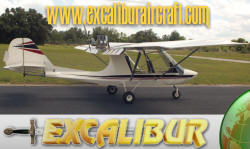|
The pilot of a Piper PA-18-150 Super Cub had just departed
his private strip in Mattawa, Ontario, in good VFR visibility conditions.
He intended to do a couple of local circuits alone as a first flight after
having recently installed skis. He was to depart later with a passenger to
visit a nearby fishing camp. After takeoff, the pilot flew circuits over
the southwest area of the town. Simultaneously, the pilot of a Kitfox IV/A
was flying local VFR circuits. The Piper Super Cub was observed flying
northeasterly towards the town and the Kitfox was observed flying
southwesterly over the town when the two aircraft collided over Sid
Turcotte Park.
This is a worst case
interception of about 90° to each other and possibly at the same altitude
in level flight. This could have been prevented if one or both pilots were
maintaining a scan that included good head movement to observe targets in
blind spots, such as behind door posts, as would have been applicable in
this case.
The collision angle fosters
speculation that both were stationary targets near or behind a door post
or window post and thus both remained invisible to each other until the
collision. I could list numerous cases of this near airport/local flying
type of mid-air collision; however, I would like to focus on avoidance.
There are several tools that
pilots can use for local separation, including radios, prior discussions,
landing lights or, in the case of ultralights, strobe lights a spotlight,
pre-flight briefing with other area pilot or pilots doing simultaneous
flights in a particular area and, last but not least, using proper
procedures around airports. —Ed.
Where do procedures apply? Procedures mean following the widely accepted
doctrine for altitudes, tracks and, if applicable, radio calls while
operating within or near a circuit, including the approach for over flying
the airport or private strip for the purpose of landing. Private strips
are no different from airports because other aircraft can be present. The
circuit rules published in the A.I.P. are designed to protect pilots
against such accidents by establishing set procedures to allow pilots to
form an organized circuit and landing pattern. There are procedures for
radio-equipped aircraft and for those operating NORDO. Last but not least
is scanning out of the cockpit—LOOK OUT.
Do not focus on one area; look all
around the aircraft and change the nose position of the aircraft to detect
targets hidden by posts or other obstructions. Scan for ground shadows of
other aircraft that might be above you and too close, particularly on VFR
days. Leave in-cockpit chores, such as programming GPS or folding maps,
until you are clear of the circuit and keep totally focused on the area
all around your aircraft, allowing yourself to be interrupted only by
necessary radio calls and response. This is defensive flying and, if
practiced, can eliminate you from becoming a mid-air statistic. I also
speak from my own many close encounters; during some of these encounters I
actually observed that the pilot in the other aircraft did not see my
aircraft or my avoidance manoeuvre.
From Aviation Safety Ultralight |


